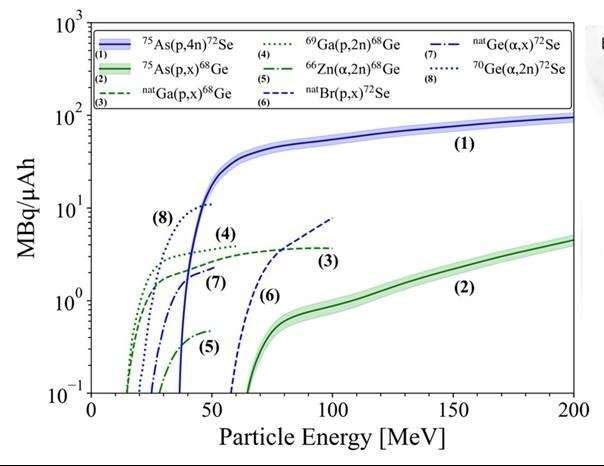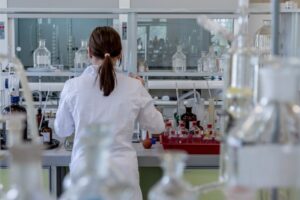On Earth, scientists employ high-energy protons to generate isotopes that may be used to diagnose and cure cancer. However, in space, these same high-energy protons may endanger spaceships and the men who fly in them. These dangers necessitate the use of protective shielding on spacecraft. Unfortunately, scientists are still unsure about the dangers presented by these high-energy protons. Scientists examined the cross sections (probabilities) for high-energy proton reactions used to create crucial new radiopharmaceuticals to learn more about the hazards and the utilization of these protons to make isotopes.
The Effect
Scientists can maximize the amount and purity of medicinal isotopes required in the battle against cancer by measuring these cross sections. These include employing high-energy protons from particle accelerators to create the medications arsenic-72-HBED and gallium-68-DOTATOC. These medications are used by doctors to determine where malignancies have spread in the body. High-energy protons, on the other hand, are a deadly sort of space radiation.
Scientists can enhance the design of shielding that protects humans and electronics in spacecraft by better understanding their behavior and responses. This will enable us to investigate distant planets in our solar system, as well as learn more about how nuclei absorb and release energy.
Summary
Using proton beams from the Brookhaven Linac Isotope Producer, the Los Alamos Isotope Production Facility, and the Berkeley Laboratory 88-Inch Cyclotron, researchers from Brookhaven National Laboratory, Los Alamos National Laboratory, and Lawrence Berkeley National Laboratory conducted a series of experiments. These tests assessed the generation rates of 78 sotopes from proton bombardment of niobium and arsenic targets with energy up to 200 MeV, including two radionuclides used for PET and one used to monitor the exposure from proton beams in accelerators.






